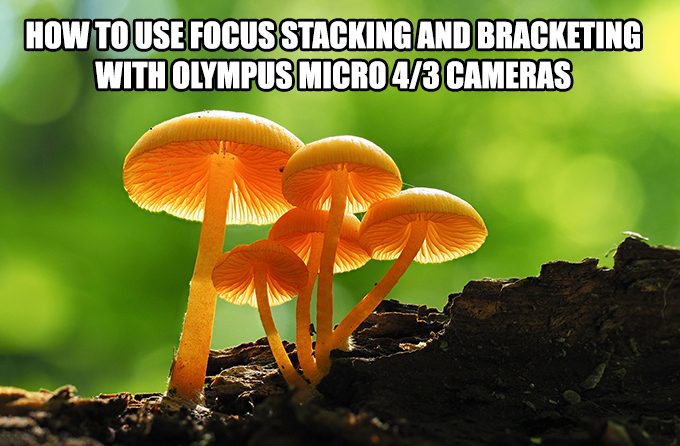
How to use Focus Stacking and Bracketing with Olympus Micro 4/3 Cameras
By Olympus Trailblazer Peter Baumgarten
Every autumn, in the forests near my home, a massive reproductive event takes place that I just can’t ignore. It starts during the warm days of summer when long tendrils of mycelium digest their way through the rotting corpses of fallen forest detritus. When autumn arrives, an asexual explosion erupts from the earth, as the fruiting bodies strive to spread their genetically identical spores throughout the forest floor. We’re talking mushrooms here, people! And I love to photograph them.
Mushrooms grow remarkably quickly and decay even quicker. But if you time it right they can be quite photogenic. Many species are so small that a macro lens is an absolute necessity. Anyone who has worked with a macro lens recognizes that it can be a real challenge to achieve a sharp subject from front to back and still maintain a nice, soft, defocused background. In fact, with most subjects it’s an impossible task. Enter focus stacking or focus bracketing.
The concept is quite simple. Take a series of photos with each one being focused at a slightly different point on your subject. Then use software to stack and process them in order to capture a greater depth of field than is capable with just a single shot using a macro lens, all while maintaining nice bokeh in your final image. Olympus developed built-in focus stacking in their OMD E-M1 with the release of the 4.0 firmware update. That feature has been included and improved in the E-M1 Mark II. Although focus bracketing will be addressed, the main focus of this post is the focus stacking feature. All of the images have been photographed using the new Mark II model.
Olympus OMD E-M1 Mark II, 60mm f/2.8 macro, ISO640, 1/200s, f/3.5, +0.3EV, focus differential 4
Equipment
The following Olympus cameras have built-in focus bracketing and focus stacking.
OMD E-M1 Mark II
OMD E-M1 (firmware version 4.0)
OMD E-M5 Mark II (firmware version 2.0)
OMD E-M10 Mark II
PEN-F
Not every lens is compatible with the focus bracketing/stacking feature. The PRO line of lenses have both the bracketing and stacking feature. Other Olympus lenses allow for bracketing, but not the built-in focus stacking.
A tripod is definitely recommended. However, a few of the shots in this post were hand-held and for others I placed the camera on the ground.
The Process
The following steps will set up the camera for focus stacking.
• From within the Menu, select the Camera2 options.
• Select Bracketing. You can bracket a variety of settings (Auto Exposure, White Balance, Flash, ISO, Art Filters, and Focus Bracketing). Select Focus BKT.
• Turn Focus Stacking On.
• Select Set Focus Differential. Choose a focus differential from 1 to 10. This determines the difference in focus position between shots.
• Press OK repeatedly to engage the settings. You should see the letters BKT at the top of the LCD indicating that Focus Bracketing is set.
The focus stacking feature will shoot 8 photos at the focus positions you set and then merge them into one jpeg file at full resolution. Achieving good results will take some experimenting since so many variables are at play – subject size, distance from subject, lens choice, aperture setting, and focus differential. All eight photos are recorded plus the final stacked image.
The focus stacking feature is accessed through the Bracketing menu. With stacking turned on, the “Set number of shots” is greyed out.
The focus differential will set a wide or narrow focus difference between shots.
Generally I have found that a wider aperture and a narrow focus differential yields excellent results with the fungal subjects in this post. In all of the photos below I have included the lens, basic camera settings and focus differential.
Although I have found the focus stacking feature to yield excellent results, it is not infallible. There are times where the camera cannot process the stacked image and a message pops up stating, “Focus stacking error. Image composite failed.” This is usually due to camera or subject movement, however I have also had it occur when the lighting changes rapidly during the sequence.
60mm f/2.8 macro, ISO640, 1/125s, f/3.5, focus differential 4
60mm f/2.8 macro, ISO 400, 1/250s, f/3.2, -1.3 EV, focus differential 3
40-150mm f/2.8 PRO, ISO 1000, 1/80s, f/3.2
Lens: 12-40mm f/2.8 PRO, ISO 400, 1/125s, f/5.0, -0.3EV, focus differential 3
60mm f/2.8 macro, ISO 400, 0.5s, f/5.0, -0.7EV, focus differential 3
60mm f/2.8 macro, ISO 400, 1/20s, f/4.5, focus differential 3
60mm f/2.8 macro, ISO400, 1/13s, f/5.0, focus differential 3
12-40mm f/2.8 PRO, ISO400, 1/20s, f/5.0, -0.3EV, focus differential 5
60mm f/2.8 macro, ISO 640, 1/60s, f/3.5, -1.0 EV, focus differential 2
60mm f/2.8 macro, ISO400, 1/25s, f/5.0, focus differential 3
Using a wide angle lens can provide a bit more context to the shot.
7-14mm f/2.8 PRO, ISO200, 1/640s, f/2.8, -0.3EV, focus differential 2
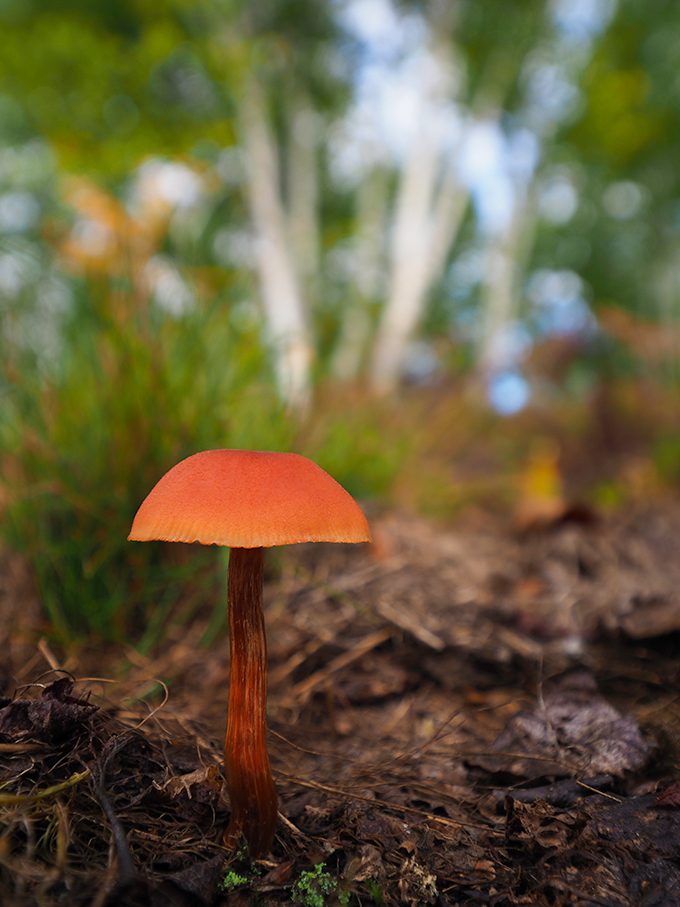
This animated gif illustrates the focus bracketing process. 8 images are taken based on the pre-set focus differential. In this case the differential was set at 3.
Bracketing vs. Stacking
I have found the built-in focus stacking to be remarkably accurate. So why would you opt for bracketing vs. stacking? Here are a couple of reasons;
• The stacked image is trimmed. Regardless of subject, which lens you use, or whether you use a tripod or not, the final stacked image is trimmed along all four edges. The final image remains the same size (5184 x 3888px for the E-M1 Mark II), which means some interpolation must be going on. This must be taken into account when composing the shot.
• Details vs distance. The fungus below had countless stalactite-like fingers and was about 15 cm from front to back, a fair distance for a macro shot. I attempted to use the stacking feature, which only brackets and stacks 8 photos. After some experimenting with the focus differential settings I had to compromise. I could capture the details of the front fingers but loose the details in the back, or I could capture the entire distance, but have too much interpolation that would blur out some of the fingers. Not willing to compromise I opted to use bracketing instead.
To access the bracketing options turn off focus stacking. This allows you to choose from 3 to 999 shots with a focus differential between 1 and 10. For the image above, I selected 20 shots with a focus differential of 2. After the sequence I had a look at each one using the LCD and determined that I had captured sufficient detail throughout the range.
Upon uploading the images I determined that I only needed 12 of those images to clearly capture the fungus from front to back. I then used Photoshop to stack them. This gave me greater control over the process (which I like), and there was no trimming of the final image. That being said, I really do like the convenience of the built-in focus stacking and how easy it is to use.
A Final Photo
It was my interest in the sheer number of mushrooms sprouting up in a local bush lot that inspired me to experiment a bit more with focus bracketing and to write this post. However, there are plenty of subjects out there where focus bracketing can be used. The photograph below is one example, but with full disclosure, it was a complete accident. Shortly after photographing a mushroom, I came across two toads on the trail. I bent down quickly, framed the shot, and pressed the shutter release only to realize I still had focus stacking enabled. Here’s that shot.
12-40mm f/2.8 PRO, ISO 400, 1/160s, f/5.0, focus differential 5

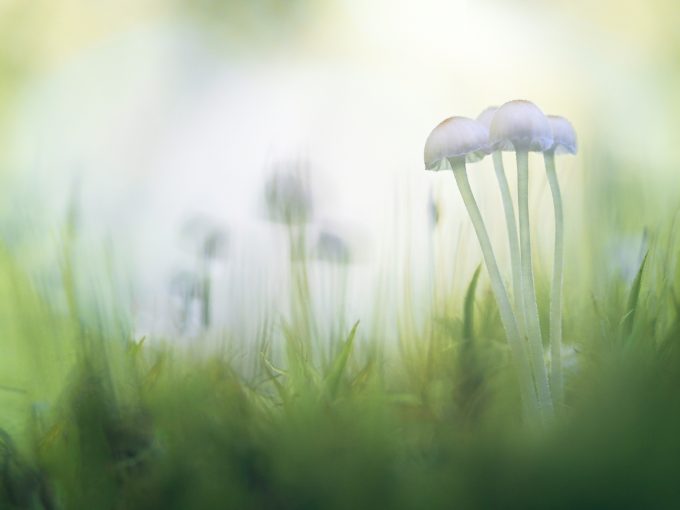
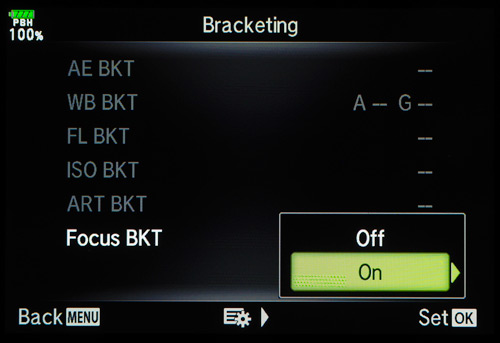
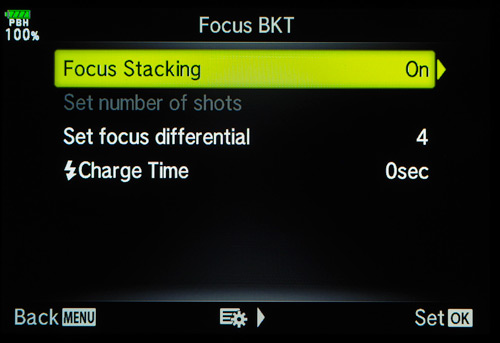
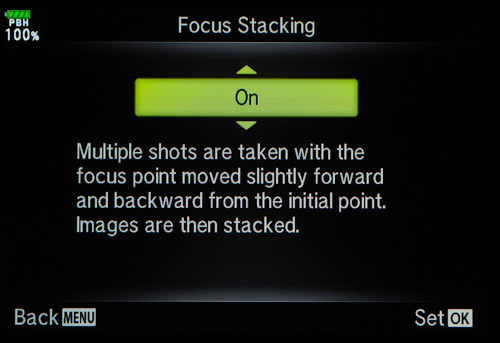
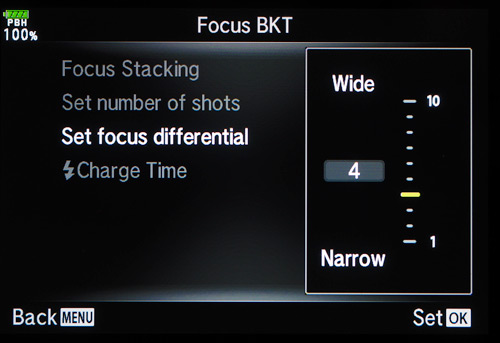
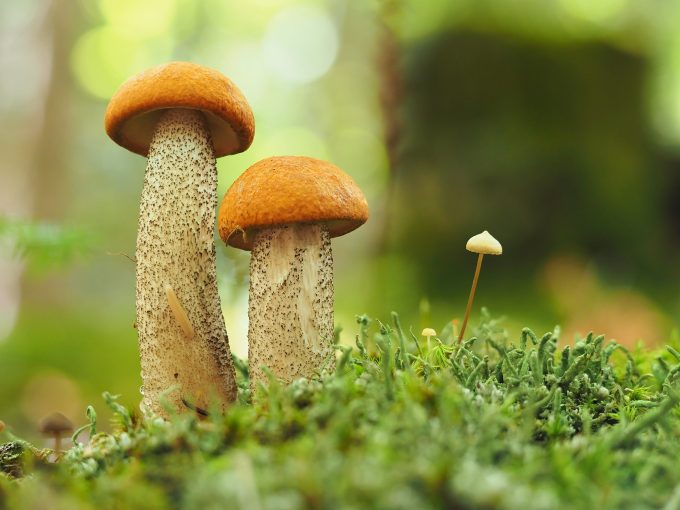
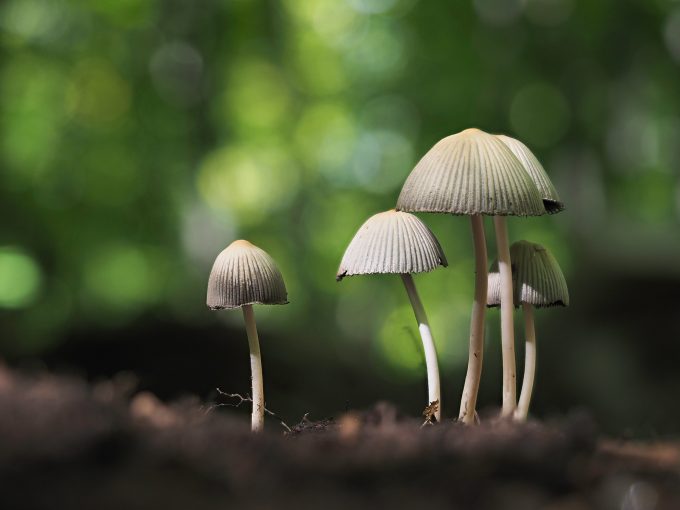
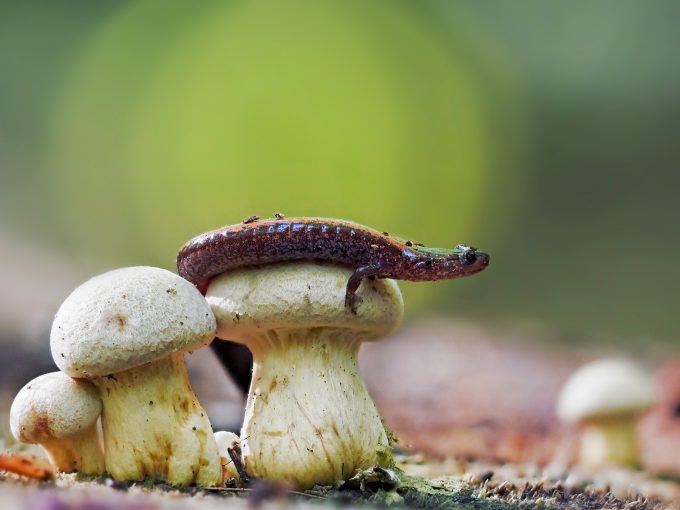
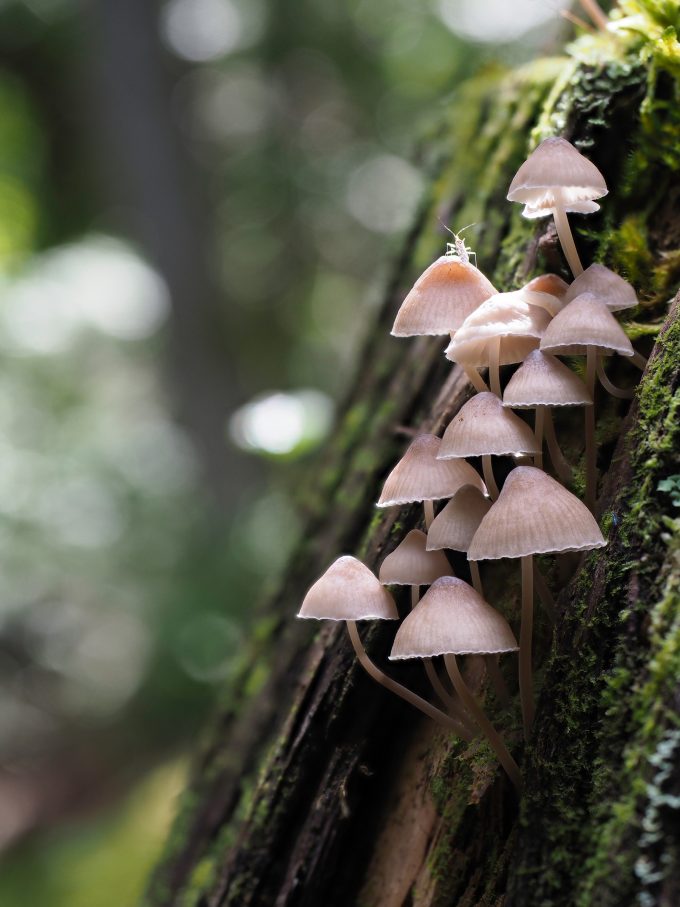
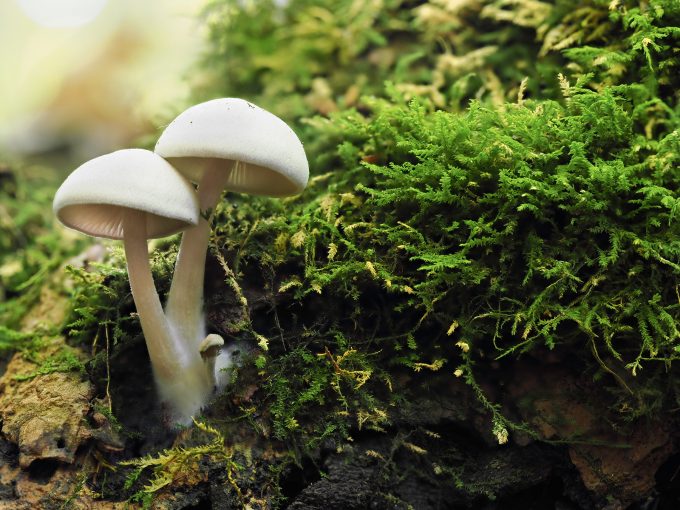
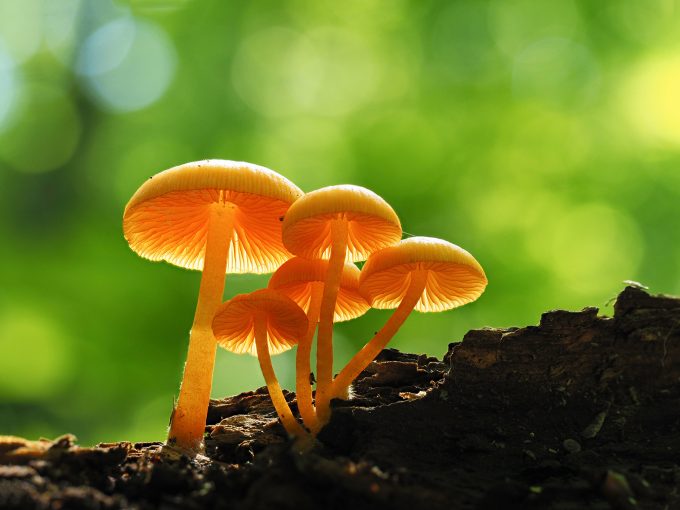
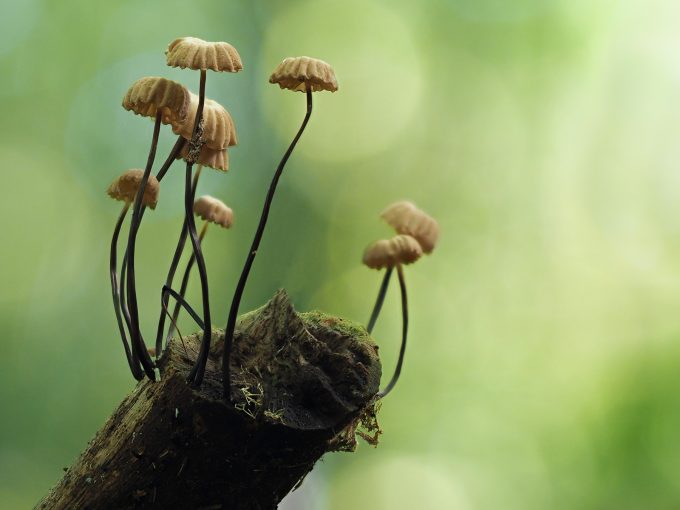
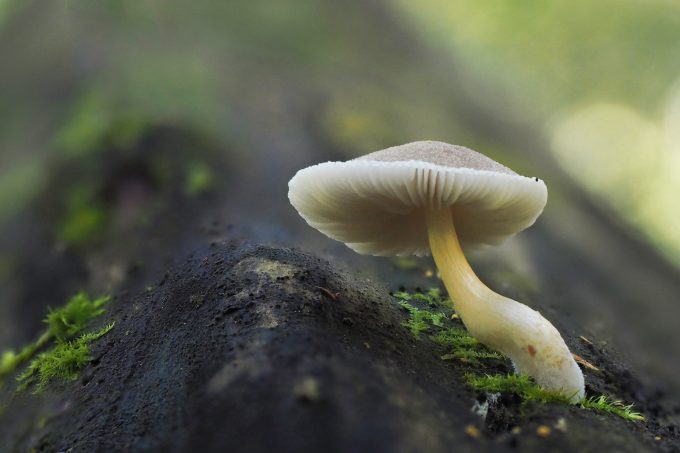
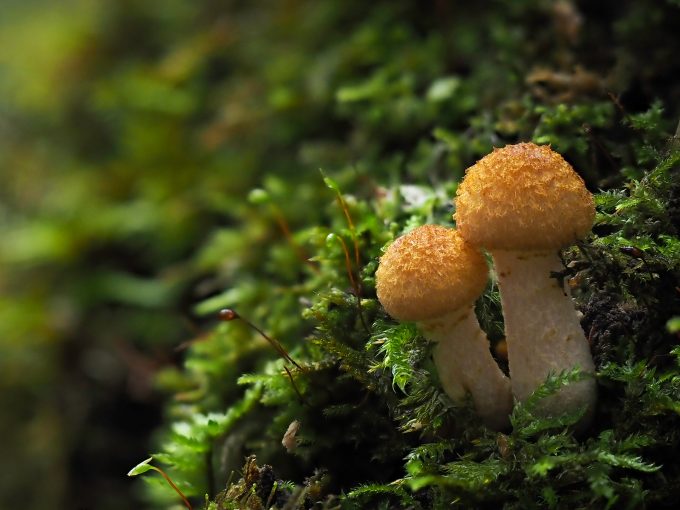
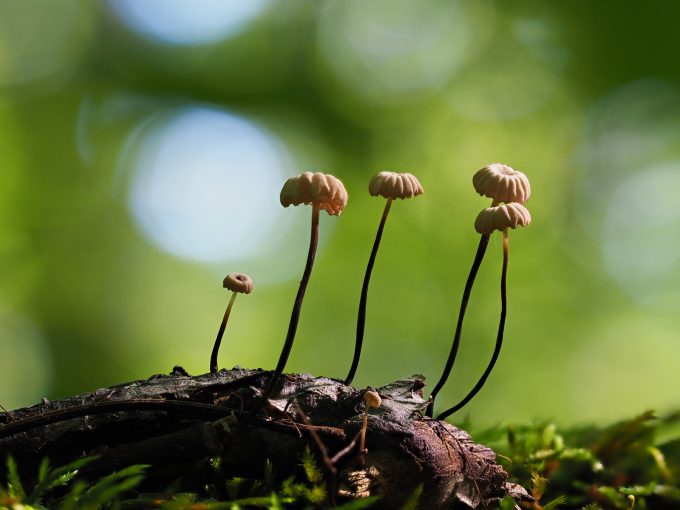

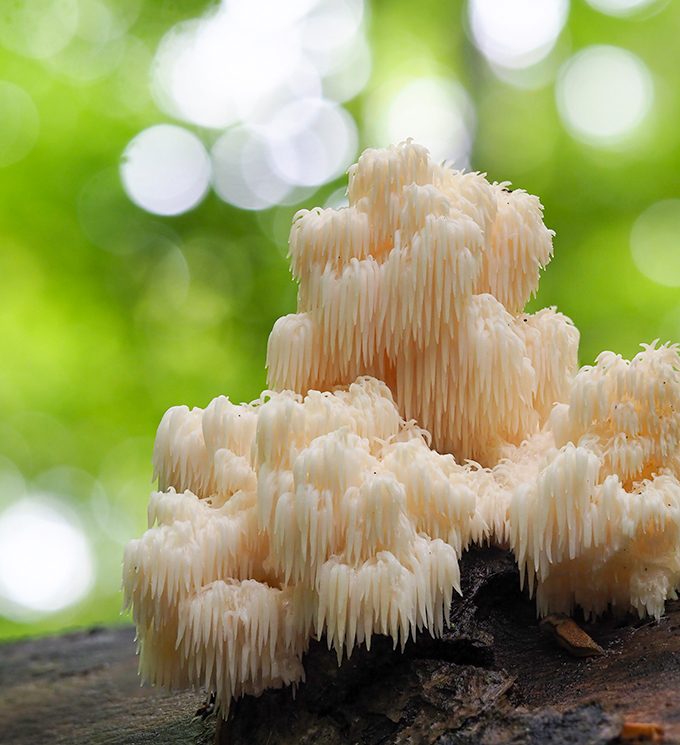



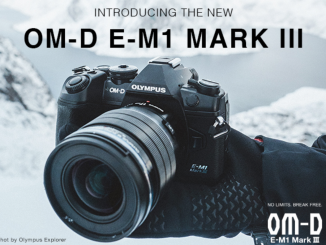
I’m just learning about my new OMD E-M1 Mk II. It can be overwhelming! I just read your very helpful blog on focus stacking—thanks!
Mine is a terribly elementary question! When I go to the “Focus BKT” option, and turn it “On,” the “Focus Stacking” option at the top is always greyed out (so not accessible). I cannot figure out why. I understand that it works only with Olympus Pro lenses and the 60mm Macro lens. I have the Olympus 12-100mm 1:4 IS PRO lens, so think that focus stacking should be possible. Is my lens the problem or might there be something else you could suggest?
Thanks very much.
David
Looks like exactly the same article posted two months prior by Peter Baumgarten at http://www.creativeislandphoto.com/blog/focus-stacking-and-bracketing
So who’s article is it?
It’s PETER’s article. He shared it here as well.
The 60mm Macro lens isn’t a PRO model but I assume it has the stacking capability. Right?
Stacking is, as far as I know, a feature of the camera, not the lens. So it depends on the body you are using. If it’s an Olympus, I think the only model with this feature is the OMD-EM1.
I thought I’d read somewhere in this thread that only PRO lenses could be used.
This discussion might interest you: https://www.dpreview.com/forums/thread/3999301
This discussion might interest you: https://www.dpreview.com/forums/thread/3999301
Here is the list of compatible lenese: Focus stacking
8 shots are taken at different focus points and automatically composited together into a single image
Angle of view becomes slightly smaller
Compatible with :
M.Zuiko Digital ED 60mm f/2.8 Macro
M.Zuiko Digital ED 12-40mm f/2.8 PRO
M.Zuiko Digital ED 40-150mm f/2.8 PRO
M.Zuiko Digital ED 30mm f/3.5 Macro
M.Zuiko Digital ED 7-14mm f/2.8 PRO
M.Zuiko Digital ED 8mm f/1.8 Fisheye PRO
M.Zuiko Digital ED 300mm f/4.0 IS PRO
Thanks. Much appreciated.
I have the E-M1, but all original 4/3 Pro glass (not micro 4/3). Does anyone know if I can use 4/3 lenses on my E-M1 to do focus stacking and/or bracketing? Or do I need a micro 4/3 lens?
PEn F don’t has the focus stacking, only bracketing
Some very good photos, illustrating this very useful feature of the E-M1, especially when combined with the 60mm macro lens.
I believe, however, that automatic stacking and bracketing are only available on the E-M1, whereas the other models mentioned in the original post only offer focus bracketing, which may require a firmware upgrade.
For anyone interest in more technical details about the E-M1 stacking feature, I have written about these on my own website at http://home.btconnect.com/mike.flemming/stacking.html
I also mention some of the pitfalls.
Good pics, illustrating what I find is a very useful feature of the E-M1, especially when combined with the 60mm macro lens.
I believe, however, that only the E-M1 has both automatic stacking and bracketing. The other models mentioned in the original post only have focus bracketing and this may need a firmware upgrade.
For anyone interested in knowing more about the technical aspects of stacking with the E-M1, I have a description on my own website, at http://home.btconnect.com/mike.flemming/stacking.html I also mention some of the pitfalls.
Excellent article! Here in Western Australia fungi are not well known, or documented. We actually had an ‘explosion’ of fungi growing on our bush block this year and I started photographing them – wish I’d appreciated the power of focus stacking then. Your post also reminded me to update the firmware on my EM1 Mk1. Wonderful images too. Thank you for posting Peter (and Steve).
Excellent work.
What a great feature. I have a pen-f and 25 f1.8. I do a lot of product photography and wish I could use this feature without having to spend on a “pro” lens
I just tried it with my E-M5 II and the new 12-100 Pro lens, and I’m very disappointed to not find the Focus Staking option in my menu. Any suggestions would be appreciated.
I can’t tell you exactly, but I know you have to have the drive mode set to something other than still. If you have it set on still the focus stack menu option is grayed out not selectable.
as far as I know the EM 5 doesnt have this stacking, only bracketing
Basedon my research, it seems that article incorrectly states that, when combind with a Pro lens, a number of Olympus bodies have the focus stacking feature. From what I read, it’s only the E-M1.
Wow! Such beautiful shots. Just bought an E-M5 II and definitely plan to try this out. Looks like the solution to gaining greater depth of field in macro shots.
Lots of tiny little nature boners that turn into umbrellas. But no toads, man. No toads. Maybe they are invisible toads? Or maybe theyre very very fast moving toads? Or maybe you ate some of your subjects and thought that you saw toads? And that’s no problemo. It happens to every great shroomographer, bro. Blame the rabbit with the pocket watch.
Yep, several photos have gone missing from the article. Maybe they are on Peter’s website, if you go there instead. I just checked on his blog and, yes, they are there! http://www.creativeislandphoto.com/blog
There aren no photos missing in this post, anywhere.
??? A couple of persons have written they don´t find the image of a couple of toads, mentioned almost at the article´s end. I can´t find that image either.
Apart from that, a well written info on the focus stacking function!
Have just, at last, had my E-M1 updated to the new firmware which among many things do include this feature. Also had to wait until I had got the 12-40/2.8PRO.
Nice! Thank you for posting this. I will have to give it a try. I couldn’t see the toad photo either.
How do you like the M1 II vs the M1?
Very nice photographs. Thanks. Couldn’t find the ‘accidental’ photo of the toads mentioned in the article…
https://www.damianmcgillicuddy.com/focus-stacking-and-focus-bracketing-maximising-depth-of-field-on-your-om-d-e-m1-e-m5-mark-ii-and-e-m10-mark-ii
I had no idea olympus cameras could do this. I love this feature. I also love their live view for long term exposures. I currently own fuji and can’t believe how far behind they are when it comes to features like these. Makes me want to pick up a used olympus just for hdr, focus stacking, long exposures etc…
Which olympus bodies offer this feature?
I had no idea olympus cameras could do this. I love this feature. I also love their live view for long term exposures. I currently own fuji and can’t believe how far behind they are when it comes to features like these. Makes me want to pick up a used olympus just for hdr, focus stacking, long exposures etc…
Which olympus bodies offer this feature?
“The stacked image is trimmed. Regardless of subject, which lens you use, or whether you use a tripod or not” – I think this would be due to focus breathing. You can see evidence of this in the GIF you made.
Sony needs to take a look at this excellent feature and consider incorporating it into their cameras. With this feature added I would consider the FE 90 f/2.8 G. Without it there is no reason for me to have an autofocus macro and I will continue to make use of my great manual focus macro lenses.
Superb images Peter. You have found a niche indeed. Those images would look great framed and displayed. I am very impressed.
Wow, some impressive shots! Absolutely love the focus stacking JPG feature on the now old E-M1 in combination with the 60mm macro.
Great work and perseverance.
I tried to do stacking with my Pen F but the option doesn’t exist in the menu, only bracketing. Are you sure the Pen F has this feature, the following forum on DP Review discusses the same issue: https://www.dpreview.com/forums/post/58595581
Yup. I can’t find the “stacking” option in my Pen F too.
Olympus, please come out with a firmware update for this feature.
(Please also fix the long delay time when Pen F’s “EVF Auto Switch” is turned on)
My understanding is that stacking is only available on the EM1 and EM1ii.. it’s a bummer, I’d love to do it on my EM5ii.
Early in the article is a list of supported cameras.
For instance:
https://www.damianmcgillicuddy.com/focus-stacking-and-focus-bracketing-maximising-depth-of-field-on-your-om-d-e-m1-e-m5-mark-ii-and-e-m10-mark-ii
thanks very much, that is a good start for stacking beginners.
But one question: are you sure that the EM 10 II has the stacking feature built in?
I could not find any confirmation ot that.
same question for the EM 5II
Wonderful article and one that even though I have used the feature still helps clarify and explain the process.